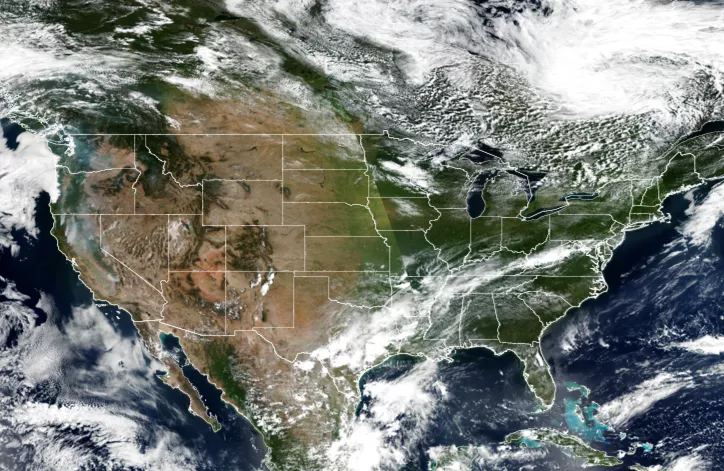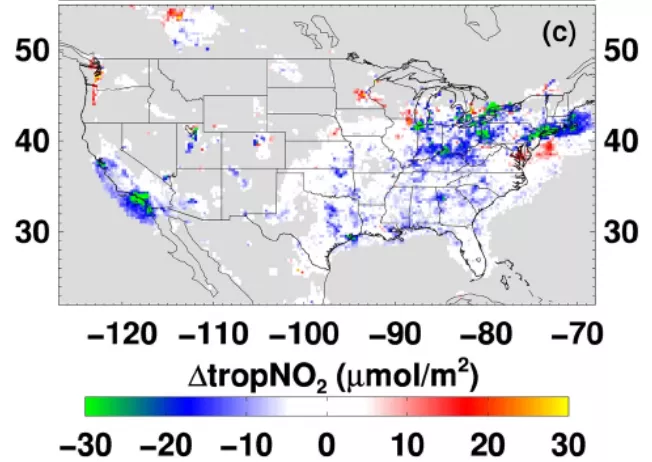
The widespread adoption of remote work may be keeping levels of air pollution lower than pre-COVID lockdown levels even after restrictions were lifted, a new study suggests.
The NOAA-led study used data from Earth-observing satellites, including the NOAA/NASA Suomi-NPP satellite, to detect nitrogen dioxide (NO2) and particulate pollution in the atmosphere over the U.S. during 2020. NO2 is readily observed by satellite sensors such as the Sentinel 5P Tropospheric Monitoring Instrument.
The study found that in the spring of 2020, sudden declines in road traffic due to COVID-19 led to reduced NO2 pollution in U.S. cities nationwide. But when restrictions were lifted, NO2 pollution from transportation remained around 20% lower than pre-COVID averages in some cities through the end of the year.
“While it felt like things were getting back to normal, when we looked at the traffic data in various U.S. cities, it was clear traffic levels were still lower than pre-pandemic levels,” said co-author Brian McDonald, a research scientist at the NOAA Chemical Sciences Laboratory.

The study’s scientists concluded that the lingering decline in air pollution could be explained by the continuation of remote work habits adopted in 2020.
“Even though lockdowns had been lifted by May, in most urban areas a significant portion of the workforce continued to work remotely,” said the study’s lead author Shobha Kondragunta, a research physical scientist at NOAA’s Center for Satellite Applications and Research.
“So if employers continue to offer remote work policies, this could become the new normal in air quality.”
Read the full article in the American Geophysical Union’s Journal of Geophysical Research - Atmospheres and its accompanying press release in Eos magazine.
